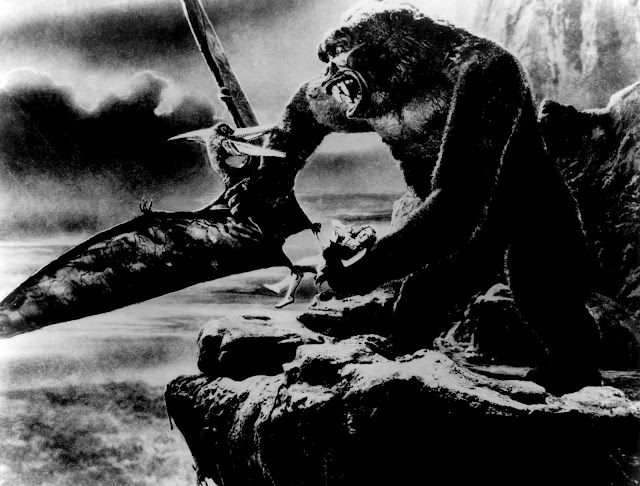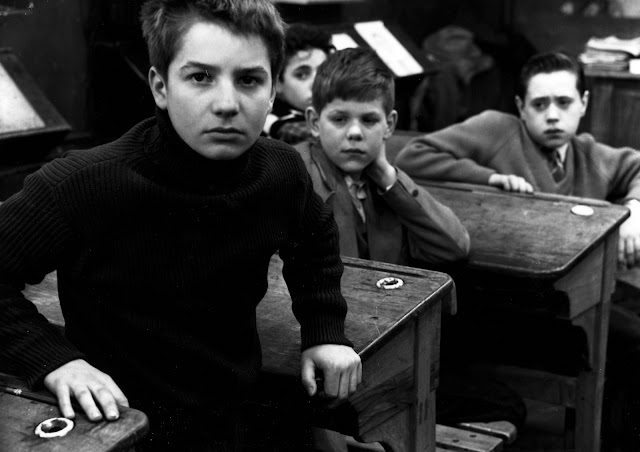The Earrings of Madame de... (1953)
Max Ophuls' "The Earrings of Madame de..."
While watching Max Ophuls' 1953 French film "The Earrings of Madame de...," I was struck by how the film seems like a complete synthesis of all of Ophuls' most notable works. It had the very same theme and tone to his 1933 German film "Liebelei" while also mimicking some of his more recent French films "La Ronde" and "Le Plaisir." While the former dealt with very similar plot devices revolving around lust and passion attempting to be contained by restricting upper class respectabilities, the latter films take this notion and analyses them further by removing the restriction of class and nationality into more universal concepts. What "The Earrings of Madame de..." does so well is essentially reiterate "Liebelei," while also reinforcing the concepts of class and feminism.
The film centers on the nameless "Madame de...," an aristocratic woman at the turn of the century in France's "Bell Époque." She is married to Andre, a count and general in the French army. The two are companionable, but there is no passion in their marriage. They have wealth, lavish lifestyles, a beautiful mansion, and all the things that wealth could afford, but they are childless and sleep in different rooms. Madame is a superficial woman who has amassed large debts due to her lavish lifestyle. To pay off these debts, she sells her earrings back to their original proprietor. Andre ends up finding this out and buying the earrings back (without Madame realizing). Andre gives the earrings to Lola, a lover of his leaving for Constantinople. There, she sells off the earrings to pay gambling debts. They are then purchased by Baron Donati, an Italian diplomat. Donati eventually meets Madame, and the two fall in love at various balls while Andre is away on maneuvers. Donati gives Madame the earrings she had originally sold, much to her surprise. When Andre eventually discovers this passionate affair, he takes the earrings back, confronts Donati, and act more and more oppressively towards Madame. Madame falls into a deep depression and eventually tracks down the earrings so that she can feel close to Donati once again. Enraged, Andre challenges Donati to a duel, where Donati is seemingly killed. Madame collapses and it is presumed she has also died.
I think the most famous aspect about this film from the film history and film community clubs are the film's immersive tracking shots. Even the great American filmmaker Paul Thomas Anderson cites this film as the 'first' of its kind, creating a new cinematic landscape of immersive and intricate tracking shots. Ophuls is a wizard at experimenting with camera movement, for his movements are so graceful, imaginative, and immersive.
However, what really struck me about this film is the same thing that strikes me about most Ophuls films: his sets and more specifically, his mise-en-scene revolving around the materialism and abundance of his wealthy characters. His characters are drowning in glittery, glitzy, and glamorous possessions; they are drowning in it. So much abundance is surrounding them, even on them (hence the titular earrings). However, what Ophuls does so well is bring these visual renderings of abundance to the forefront of the story and directly contrasts this exterior to the internal suffering and emptiness of his characters, specifically the women of this story. While the men are using this abundance to issue out further constriction, tradition, and oppressive behavior, the women are the ones who suffer and become trapped under the weight of so much meaningless abundance. As French filmmaker and critic Jacques Rivette once noted, the film is "a work in which the picturesque tries hard to conceal the pathetic." I think this is an apt assessment of the film and something of which brings the film closer to Ophuls' 1933 film "Liebelei," in that all this wealth and materialism and 'properness' espoused by its central (male) characters becomes an oppressive force in itself and ends up restricting the natural inclinations and desires (and passions) of its female characters (along with a few passionate male characters).
Overall, I enjoyed "The Earrings of Madame de..." and thought it was a great film that fully synthesizes all of Ophuls' films into one, cohesive work. I will admit that I was expecting more out of it, probably all of the hype surrounding the film filled me with big expectations. I do think, however, this film deserves another watch and I am fully on board with it.




Comments
Post a Comment